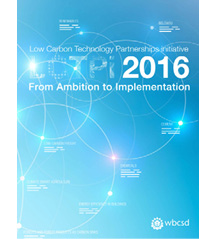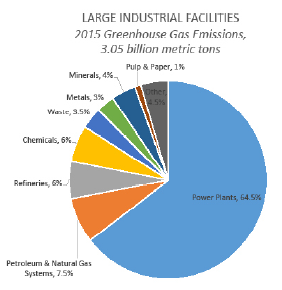From the Carbon Leadership Forum’s July 2021 report, “Environmental Product Declaration Requirements in Procurement Policies – An analysis of EPD definitions in Buy Clean and other North American procurement policies”
Read MoreTag: greenhouse gas emissions
Cement elite endorse Climate Convention carbon-reporting codification
Members of the Cement Sustainability Initiative (CSI) under the Geneva-based World Business Council for Sustainable Development (WBCSD) concur with formal adoption of the United Nations-crafted Paris Agreement, under which signatory countries pursue long-term greenhouse gas emissions reduction measures. A threshold crossed earlier this fall—where more than 50 percent of signatories took official action toward commitments affirmed at the December 2015 Conference of Parties in Paris—triggered last month’s commencement of GHG management protocols.
Read MoreCement production a blip on EPA greenhouse gas emissions radar
U.S. portland cement production accounts for just under 2.3 percent of carbon dioxide-equivalent (CO2e) emissions in the Environmental Protection Agency Greenhouse Gas Reporting Program 2015 data, which was released last month. Modern kilns increasingly running on natural gas and other coal alternatives, coupled with limited offsetting import factors, appear to position the domestic cement industry favorably in a business often tagged as the source of about 5 percent of global carbon dioxide emissions.
Read MoreCement multinationals endorse Climate Convention carbon-reporting codification
Sources: World Business Council for Sustainable Development (WBCSD), Geneva; CP staff
WBCSD Cement Sustainability Initiative (CSI) members concur with formal adoption of the United Nations-crafted Paris Agreement, under which signatory countries pursue long-term greenhouse gas emissions reduction measures. A threshold crossed last month—where more than 50 percent of signatories took official action toward commitments affirmed at the December 2015 Conference of Parties in Paris—triggered a November 5 commencement of GHG management protocols.
Read MoreBIG CITY MAYORS EMBRACE ENERGY EFFICIENT BUILDINGS
Recognizing resources consumed over buildings’ operating life cycles, mayors from 10 major U.S. cities will undertake an effort to significantly boost energy efficiency in new and existing facilities. Supporters contend such measures could cut as much climate change pollution as generated by 1 million to 1.5 million passenger vehicles every year, and lower annual energy costs by nearly $1 billion.
Read MoreConcrete Sustainability Hub responds to Obama Climate Action Plan challenges
The Massachusetts Institute of Technology-hosted Concrete Sustainability Hub (CSHub) released a statement last month after the White House outlined strategy to curtail greenhouse gas emissions.
Read More


